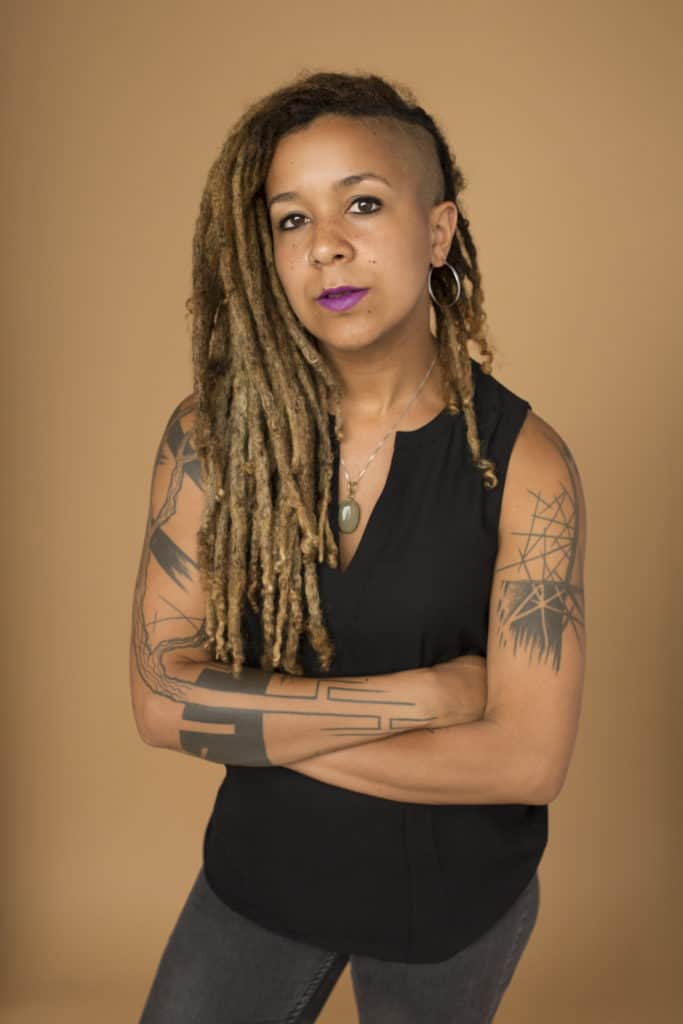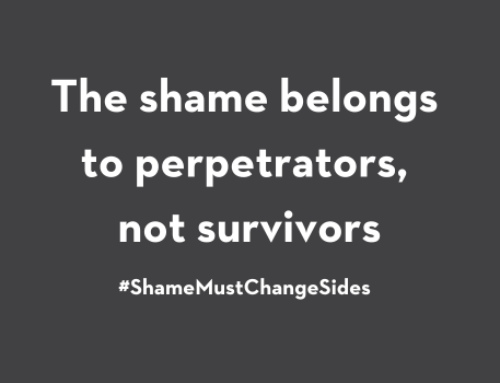Photo by Stacey Lee Photography
Robyn Maynard cares deeply about the challenges facing Black women and girls in Canada. In fact, she’s made it her life’s work.
A Black feminist author, freelance journalist, and longtime grassroots activist, Robyn recently published Policing Black Lives: State Violence in Canada from Slavery to the Present – an award-winning national bestseller.
We talked to her about her book, anti-Black racism, Canadian identity, and the future of Black women and girls in Canada.
What prompted you to write Policing Black Lives?
I started Policing Black Lives because I wanted to capture the longstanding invisibility of the harms that Black people have been subjected to, in a country that stakes so much of its reputation on multiculturalism. I was feeling increasingly frustrated about how the experiences of Black people living in Canada continued to disappear. We are disappeared from the media, we are disappeared from our education system, and we are disappeared from most people’s conceptions of this country’s history and this country’s presence.
The experiences of Canada’s Black diaspora have often been hidden behind this national narrative that rests on a perceived commitment to racial tolerance. Even on the left, the particularities of anti-Black racism are often also hidden by social justice frameworks that lump the experiences of Black people into the broader group of “racialized people”, “racialized women”, or “people of colour”, in a way that downplays the specific experiences of Black people. These experiences are not necessarily shared by all racialized people of all backgrounds.
It was important for me to speak to the unique experiences of Black people, and the harms that the state, that government, and public institutions were enacting on Black communities.
In Policing Black Lives you write that violent anti-Blackness in Canada stems from slavery. Where do we see the realities of slavery at work in Canada today? What other institutions have been complicit in maintaining Canadian anti-Blackness?
As many Black scholars before me have noted, anti-Black racism in Canada is often seen as relatively recent, coming into view when Caribbean migration and some African migration began in the 1960s/70s. But it was important to me to tell a longer story, one that shows that anti-Black racism has persisted for centuries.
To do this, it’s necessary to trace the legacy of slavery. Slavery was a system of racial control based on the idea that Black people were further from human beings, were less sentient, were more able to withstand pain, and were less intelligent. The entire system was based upon those kinds of beliefs. It was a system of punishment and heightened surveillance.
Those beliefs have very much been carried forward across multiple state institutions. Slavery was a mechanism of racialized control. Today, we can now see that Black people are disproportionately overrepresented in Canadian prisons and Canadian jails. We see that on the provincial level, we see that on the federal level, and we see it with both Black men and Black women.
We can also look at the way that Black people’s movements used to be controlled under slavery, in particular, by runaway slave ads, which, as noted by McGill-based slavery scholar Charmaine Nelson, subjected Black people to heightened surveillance just for being in public. They were seen as possibly being escaped slaves, as being criminal, and for this they were under public watch. Afterwards, informal sundown laws in many Canadian towns meant that Black people were yet again criminalized just for being in public space. Today, you can see a living legacy of this in carding. Black people in Canada are being stopped by police and asked to present identification at rates 2 to 4 times that of the general population. Freedom of movement for Black people is heavily restricted because of this.
Another place that we can see this is if we look at the sort of dehumanization of Black families and the way that Black men, women, and children were sometimes sold separately from each other under slavery. We can see the ongoing legacy of this within the child welfare system. Black families experience child removal more often and are less likely to have their children placed back in their care.
Canada is often thought of as a cultural mosaic, where people of all backgrounds live together peacefully – in fact, this is a huge part of our national and international identity. Why does racism persist in Canada? And what does it look like?
One of the reasons that racism persists in Canada is because our commitment to the perception of racial tolerance and harmony seems to be prized above the actual lived experiences of people.
Because of that, when Black activists or community members are speaking out against something – like the widely-documented disproportionate police killings that Black communities are experiencing – it’s often seen to be Black researchers, Black scholars, and Black activists who are disrupting the peace and causing the problem. For many people, the real problem is just a matter of not wanting to sully the national image of this country.
I think that really speaks to the purpose of my book, which is to trace the dehumanization of Black lives. That dehumanization allows for the continued existence of ongoing structural harms, disproportionate incarceration, disproportionate representation in child welfare and removal, the threat of indefinite detention and deportation, and the school-to-prison pipeline. And that all exists without being seen as a national crisis. Without being seen as it should rightly be, as a national emergency of racial injustice.
What additional barriers do Black women and girls face in terms of policing in Canada? Why?
When people think about racism, when people think about anti-Black racism, they’re often thinking about the experience of the young Black man. More specifically, of cis-gender, heterosexual Black men and youth. And we should be, of course, looking at their experiences, it is absolutely crucial. But we should also be talking about the ways that racial oppression is gendered, and how it is mediated by sexuality: how it impacts Black women, Black girls, Black gender non-conforming people, queer Black people. While it’s crucial to be looking at the experiences of young Black men and Black boys, we should not be doing so at the expense of so many others who experience harm, often invisible harm.
Black women have historically also been made structurally vulnerable to different kinds of sexual abuse, of rape and sexual and reproductive violence.
We also often talk about carding as if it’s a phenomenon that affects Black men, even though we know it affects Black women as well.
Another example is that upon suspicion of sex work, Black women have been stopped, beaten, and assaulted by the police. While it is understudied, it appears that Black women are subject to higher rates of violence and sexual violence, and they’re unable to access police protection in the way that white women are.
The Ontario Council of Agencies Serving Immigrants (OCASI) filed a published report that showed that in some instances, Black women who were pregnant and had HIV were automatically being reported to child and family services. Having HIV is not a risk in and of itself to children, and the way this was being done was systematic.
Even Black women who go into schools to advocate for their children, like to explain to a teacher that their child has ADHD, are putting themselves at risk because school officials have child and family services on them. Anti-Black racism against women and girls in Canada happens in places we aren’t looking, in extremely harmful and invisible ways.
What does a Canada where Black women and girls are safe and free from anti-Black criminalization and punishment look like to you? What needs to change for us to get there?
We need to remember that safety means different things to different people. For some people, police and prisons and jails are there to maintain public safety. But if we look closely at the experiences of Black women and girls, of Black peoples of all genders, really, we realize that for our communities these are actually sites of harm. They can be sites of measurable violence that exacerbate mental health issues, physical health issues, vulnerability to HIV, and more. We need to reimagine safety around the experiences of those who are most marginalized.
It’s necessary for us to imagine a world where we don’t use armed officers and jails and prisons as solutions to economic problems, health problems, social problems, and mental health issues. We need to rethink the meaning of safety and justice.
This can mean practical things, like rethinking municipal budgets: what would it mean to shift public funds away from policing poor and racialized communities? What if, instead, we spent that money on community improvement, decent housing and transportation, stable community-led youth programming? Often, in neighborhoods with large Black communities, people are often living in substandard housing with a lack of access to public transit. It’s very important to look seriously at what are often thought of as radical solutions, even if that involves large, systemic transformations.
Policing Black Lives is also available in French from publisher Mémiore D’encrier, under the title Noires sous surveillance.
Learn More:
- Black Women’s Identity in Canada: Parting the Roots of Black Hair with Simone Wright
- When Discrimination is About More Than Gender
- What African (Black) History Month Means to Me
Take Action:
- Sign up for our e-newsletter to have our latest stories and resources sent to your inbox.
- Follow us on Facebook and Twitter to join a national conversation about gender equality.







